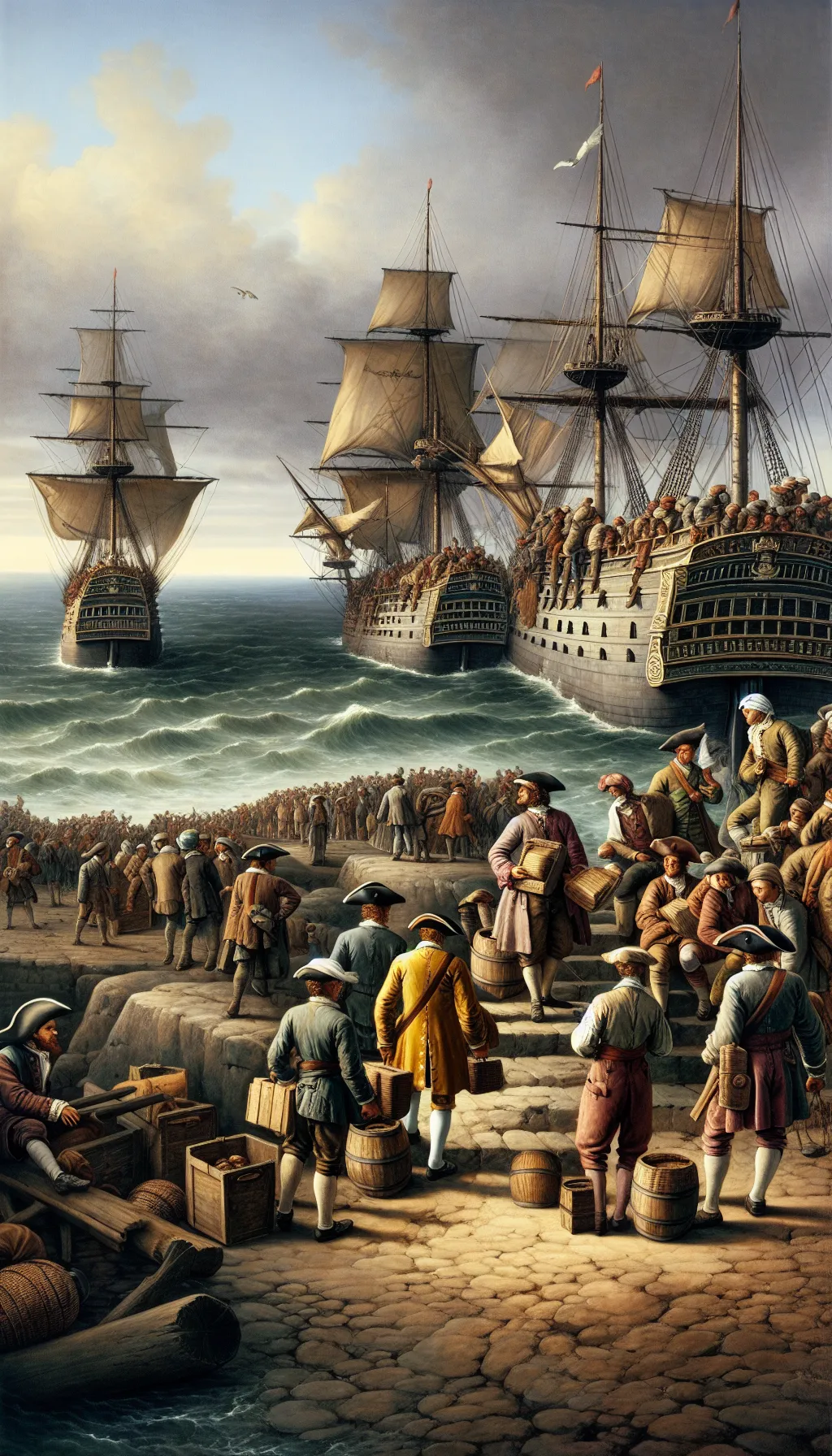South Africa – The Arrival at the Cape – April 6, 1652
TLDR;
- Event: On April 6, 1652, Jan van Riebeeck and his Dutch East India Company crew arrived at the Cape of Good Hope to establish a refreshment station for ships traveling to the East Indies.
- Purpose: The station was intended to support trade routes by providing fresh produce and supplies, not initially as a colonial settlement.
- Challenges: Settlers faced harsh weather, unfamiliar terrain, and the need to interact with the indigenous Khoikhoi and San peoples.
- Legacy: This marked the beginning of the first successful permanent European settlement in South Africa, leading to significant changes in the region’s demographics and environment.
–
Story
The salty breeze of the Atlantic Ocean carried the scent of adventure and opportunity as the Dutch East India Company’s ships anchored at the Cape of Good Hope. On April 6, 1652, Jan van Riebeeck and his crew disembarked, their eyes set on establishing a vital refreshment station for ships en route to the East Indies.

The Cape was a land of promise, a strategic waypoint on the maritime silk road. The Dutch East India Company (VOC), driven by commercial ambitions, saw the potential to cultivate fresh produce and replenish their fleets. This was not initially a colonial endeavor but a logistical one, aimed at supporting their trade routes.
The initial days were fraught with challenges. The settlers faced harsh weather, unfamiliar terrain, and the need to establish relations with the indigenous Khoikhoi and San peoples, who had distinct cultures and ways of life. Yet, under van Riebeeck’s leadership, they persevered, laying the foundations of what would eventually grow into a permanent settlement.
This moment marked the beginning of the first successful permanent European settlement in South Africa, though earlier attempts by others, like the Portuguese, had failed. The Cape of Good Hope was no longer just a landmark for sailors; it was becoming a new frontier, though large-scale European expansion would only come later, particularly with the arrival of French Huguenots and other settlers in the late 17th century.
As the settlement expanded, its impact on the indigenous populations and the environment grew, setting the stage for complex interactions that would define the region’s future.
–
| Would a different approach to settlement have changed the course of South African history? |